Visual storytelling is a powerful tool for nonprofits, enabling them to forge emotional connections and communicate their missions effectively. By utilizing techniques such as data visualization, emotional imagery, and video storytelling, organizations can engage their audiences and inspire action. Measuring the impact of these efforts through engagement metrics and donor retention can provide valuable insights into their effectiveness.
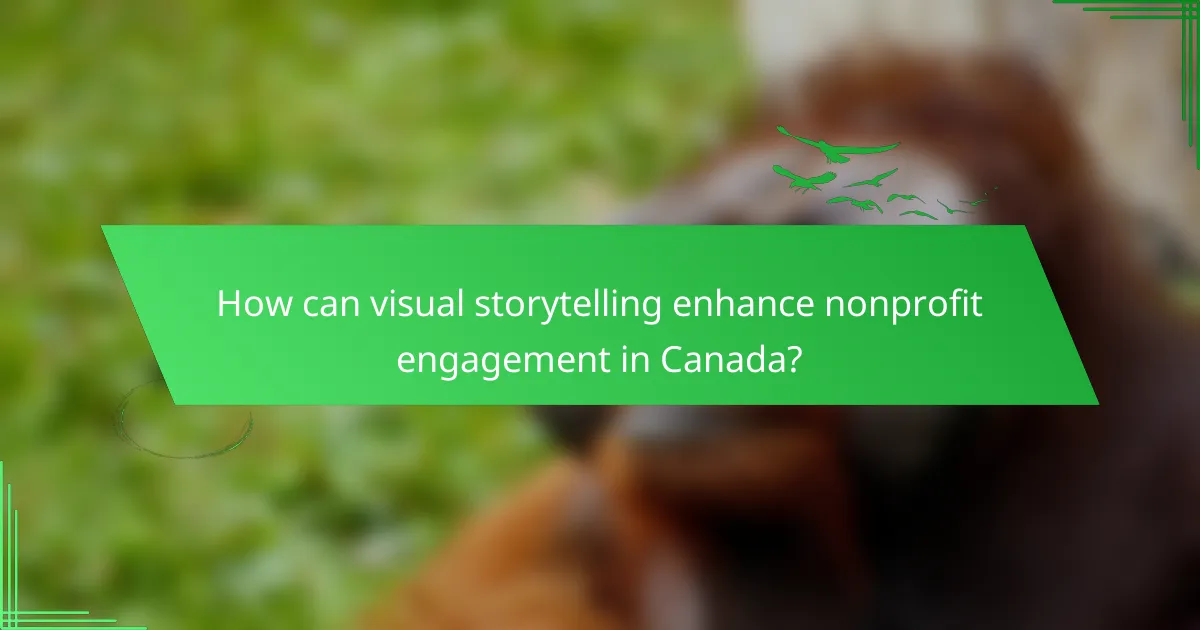
How can visual storytelling enhance nonprofit engagement in Canada?
Visual storytelling can significantly enhance nonprofit engagement in Canada by creating emotional connections and conveying messages effectively. This technique allows organizations to share their mission and impact through compelling images and narratives, fostering deeper relationships with supporters and the community.
Increased donor connection
Visual storytelling fosters a stronger connection with donors by illustrating the real-life impact of their contributions. By sharing stories through images or videos that highlight beneficiaries, nonprofits can evoke empathy and motivate potential donors to support their cause.
For example, a nonprofit focused on wildlife conservation might showcase before-and-after images of habitats restored through donations. This tangible representation of change can encourage donors to feel more personally invested in the organization’s mission.
Improved community outreach
Effective visual storytelling can enhance community outreach by making messages more relatable and engaging. Nonprofits can use visuals to communicate their initiatives, events, and volunteer opportunities, ensuring that their audience understands the value they bring to the community.
For instance, a local food bank might share infographics showing the number of families served over the past year, making it easier for community members to grasp the organization’s impact. This clarity can lead to increased participation and support from local residents.
Enhanced social media presence
Utilizing visual storytelling on social media platforms can significantly boost a nonprofit’s online presence. Posts featuring captivating images or videos tend to receive higher engagement rates, helping organizations reach a broader audience.
Nonprofits should consider creating shareable content, such as short videos or photo essays, that highlight their work and encourage followers to share with their networks. This strategy not only increases visibility but also builds a community of advocates who are passionate about the cause.
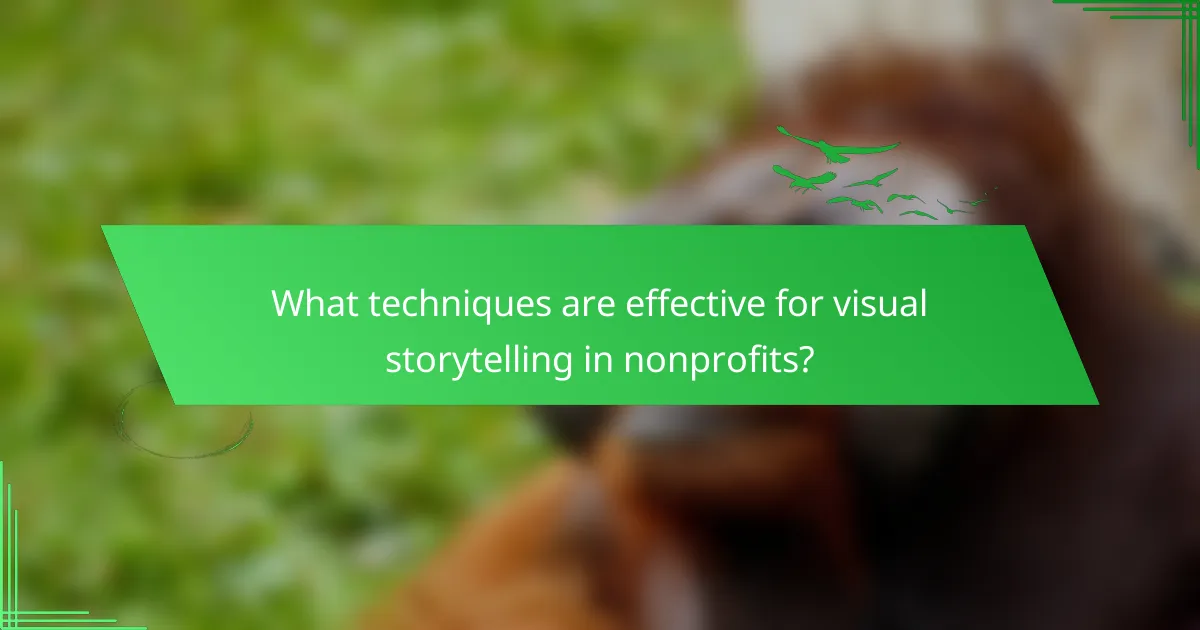
What techniques are effective for visual storytelling in nonprofits?
Effective visual storytelling techniques for nonprofits include data visualization, emotional imagery, and video storytelling. These methods help convey complex messages, evoke feelings, and engage audiences, ultimately driving support and action.
Data visualization methods
Data visualization methods transform statistics and facts into visual formats like charts, graphs, and infographics. These visuals make information more digestible and can highlight key trends or impacts of a nonprofit’s work.
When creating data visualizations, focus on clarity and simplicity. Use contrasting colors to differentiate data points and ensure that labels are easy to read. Tools like Tableau or Canva can help create effective visuals without requiring advanced skills.
Common pitfalls include overcrowding visuals with too much information or using complex jargon. Aim for a balance between informative and accessible, ensuring that your audience can quickly grasp the message.
Emotional imagery usage
Emotional imagery involves using powerful photographs or illustrations that resonate with the audience’s feelings. This technique can create a strong connection between the viewer and the cause, motivating them to engage or donate.
To effectively use emotional imagery, select images that tell a story or showcase the impact of your nonprofit’s work. Authenticity is key; avoid overly staged photos that may come off as insincere. Consider using images of real beneficiaries or volunteers in action.
Be cautious with the emotional tone of your imagery. While evoking emotions is important, ensure that the images are respectful and do not exploit the subjects’ situations. Strive for a balance between stirring empathy and maintaining dignity.
Video storytelling strategies
Video storytelling strategies leverage the power of motion and sound to engage viewers more deeply than static images. Short videos can effectively showcase success stories, highlight events, or explain complex issues in an engaging manner.
When producing videos, keep them concise, ideally under three minutes, to maintain viewer attention. Use a clear narrative structure: introduce the problem, present your solution, and conclude with a call to action. Incorporating testimonials can also enhance credibility.
Common mistakes include overloading videos with information or failing to include subtitles, which can limit accessibility. Always prioritize storytelling elements that resonate with your audience and encourage them to take action.
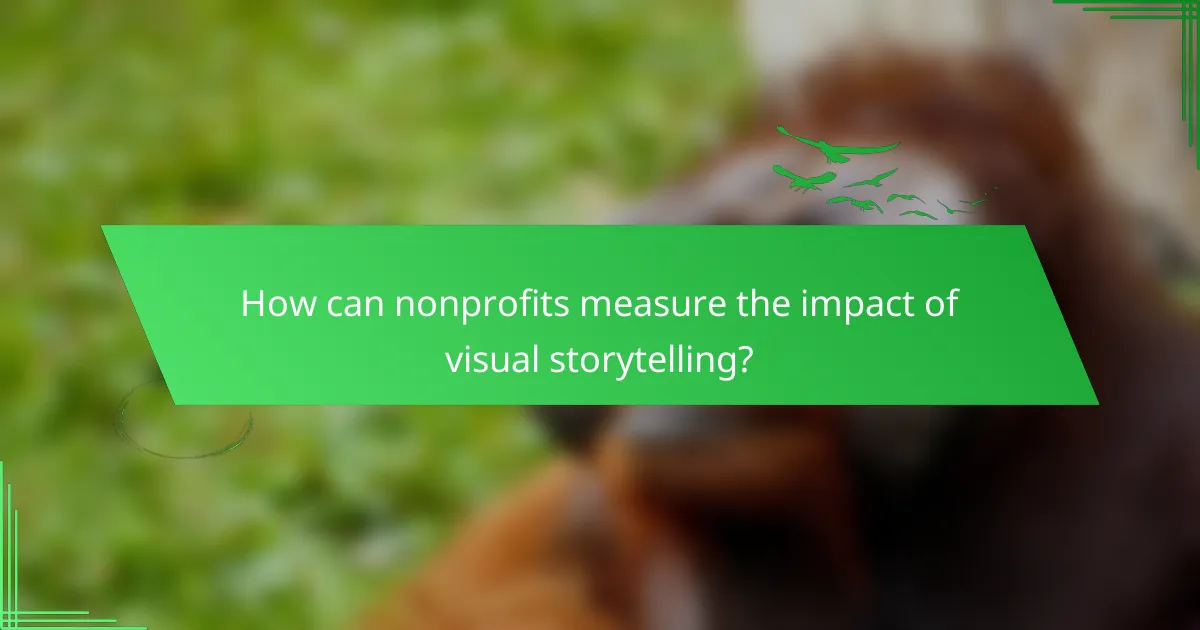
How can nonprofits measure the impact of visual storytelling?
Nonprofits can measure the impact of visual storytelling by analyzing various engagement metrics, donor retention rates, and social media performance. These indicators provide insights into how effectively visual content resonates with audiences and drives action.
Engagement metrics analysis
Engagement metrics, such as time spent on a page, click-through rates, and video views, help nonprofits gauge audience interest in their visual storytelling. Tracking these metrics allows organizations to identify which types of content captivate their audience and encourage further interaction.
To effectively analyze engagement, nonprofits should consider using tools like Google Analytics or social media insights. Regularly reviewing these metrics can reveal trends and inform future content strategies, ensuring that visual storytelling remains impactful.
Donor retention rates
Donor retention rates indicate how well a nonprofit maintains its supporter base over time. Visual storytelling can play a crucial role in enhancing these rates by creating emotional connections that encourage repeat donations.
Nonprofits should track donor retention annually and compare it to previous years. A steady or increasing retention rate suggests that visual content is effectively engaging supporters, while a decline may signal the need for a refreshed storytelling approach.
Social media shares and reach
Social media shares and reach are vital metrics for assessing the impact of visual storytelling. High share rates indicate that content resonates with audiences, prompting them to spread the message within their networks.
To maximize social media performance, nonprofits should create visually appealing content tailored to each platform. Regularly analyzing share counts and reach can help organizations understand which visuals are most effective and refine their social media strategies accordingly.
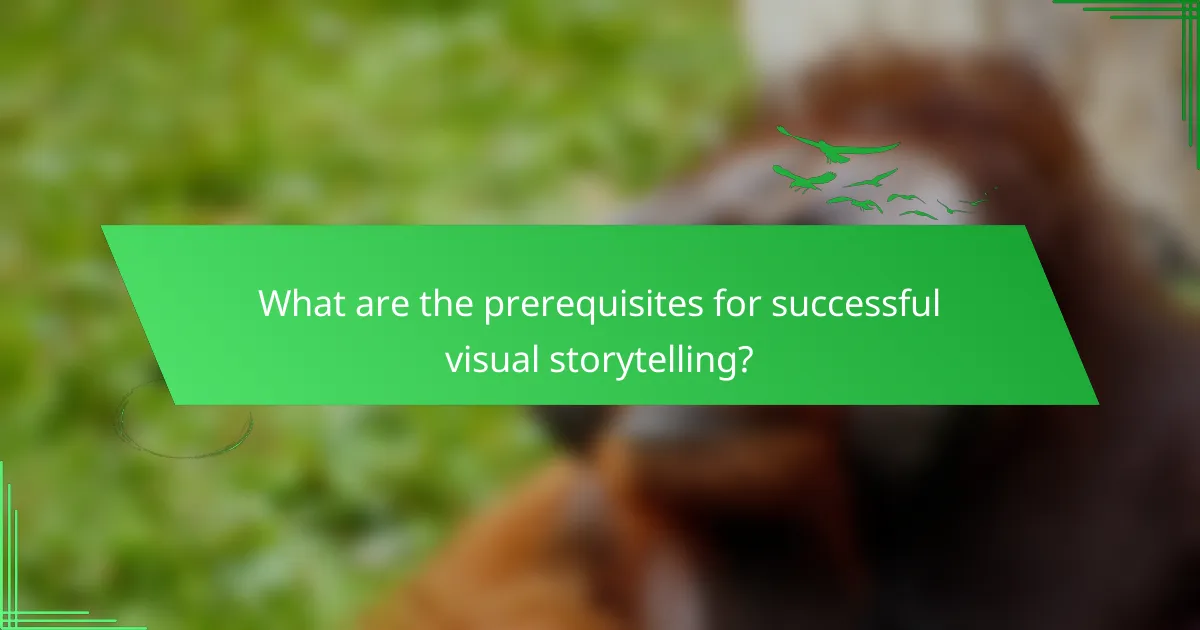
What are the prerequisites for successful visual storytelling?
Successful visual storytelling requires a deep understanding of your target audience and access to high-quality visuals. These elements ensure that your narrative resonates and effectively communicates your message.
Understanding target audience
Identifying and understanding your target audience is crucial for effective visual storytelling. Consider demographics such as age, interests, and cultural background, as these factors influence how visuals are perceived and interpreted.
Engage with your audience through surveys or social media to gather insights about their preferences. Tailoring your visuals to meet their expectations can significantly enhance engagement and impact.
Access to quality visuals
High-quality visuals are essential for capturing attention and conveying your message clearly. Invest in professional photography or graphic design, or utilize reputable stock image websites to find compelling images that align with your narrative.
Ensure that visuals are relevant and culturally appropriate for your audience. Avoid using generic images; instead, opt for authentic visuals that reflect real experiences and stories related to your nonprofit’s mission.
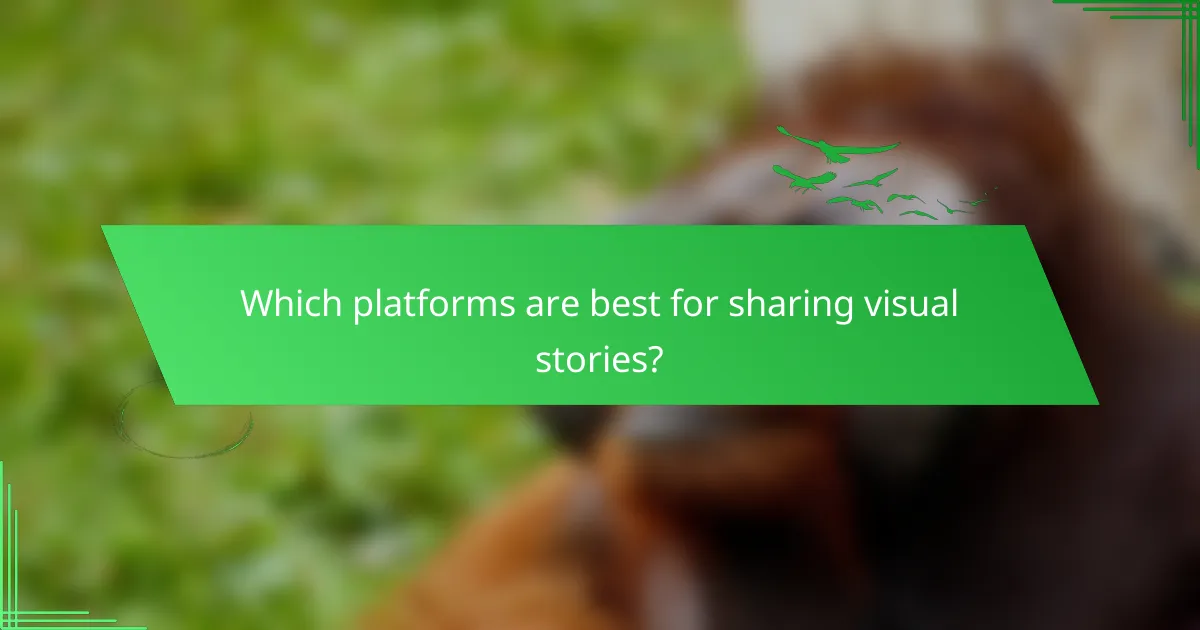
Which platforms are best for sharing visual stories?
The best platforms for sharing visual stories include Instagram, Facebook, and YouTube. Each platform offers unique features that cater to different aspects of visual storytelling, making them effective for engaging audiences and promoting nonprofit missions.
Instagram for visual impact
Instagram is designed for visual content, making it ideal for nonprofits looking to create a strong visual impact. High-quality images and short videos can capture attention quickly, and features like Stories and Reels allow for creative storytelling.
To maximize engagement, use relevant hashtags and geotags to reach a broader audience. Posting consistently and engaging with followers through comments and direct messages can also enhance community interaction.
Facebook for community building
Facebook excels at fostering community connections, making it a valuable platform for nonprofits. Through posts, groups, and events, organizations can share visual stories that resonate with their audience and encourage participation.
Utilize Facebook Live for real-time storytelling and updates, which can significantly boost engagement. Regularly share user-generated content to strengthen community ties and showcase the impact of your organization.
YouTube for video storytelling
YouTube is the go-to platform for longer video storytelling, allowing nonprofits to delve deeper into their missions and impact. Engaging narratives can be crafted through documentaries, interviews, and behind-the-scenes footage that highlight the organization’s work.
To enhance visibility, optimize video titles and descriptions with relevant keywords. Creating playlists can also help organize content and keep viewers engaged longer, increasing the likelihood of subscriptions and shares.
